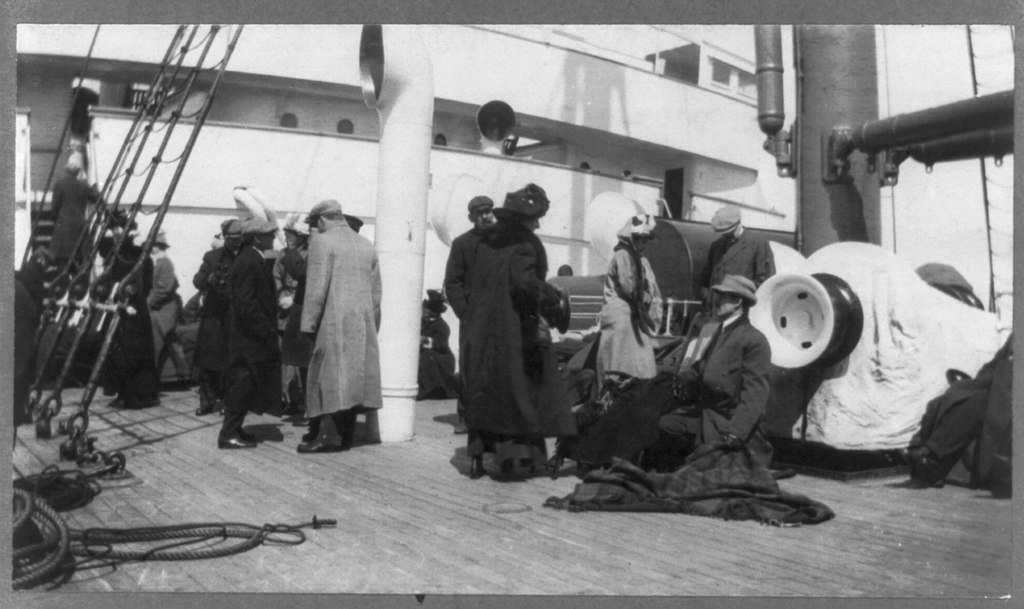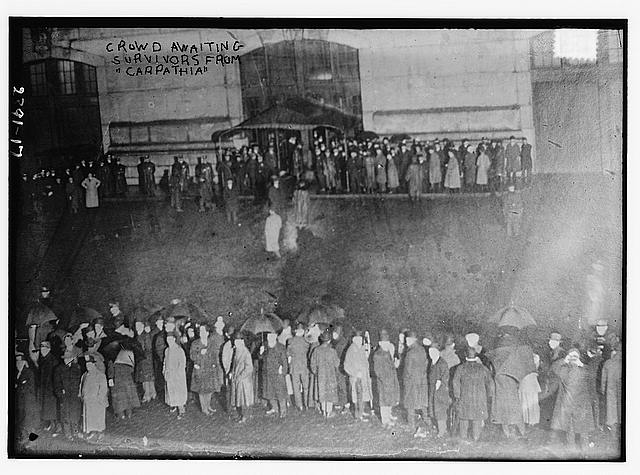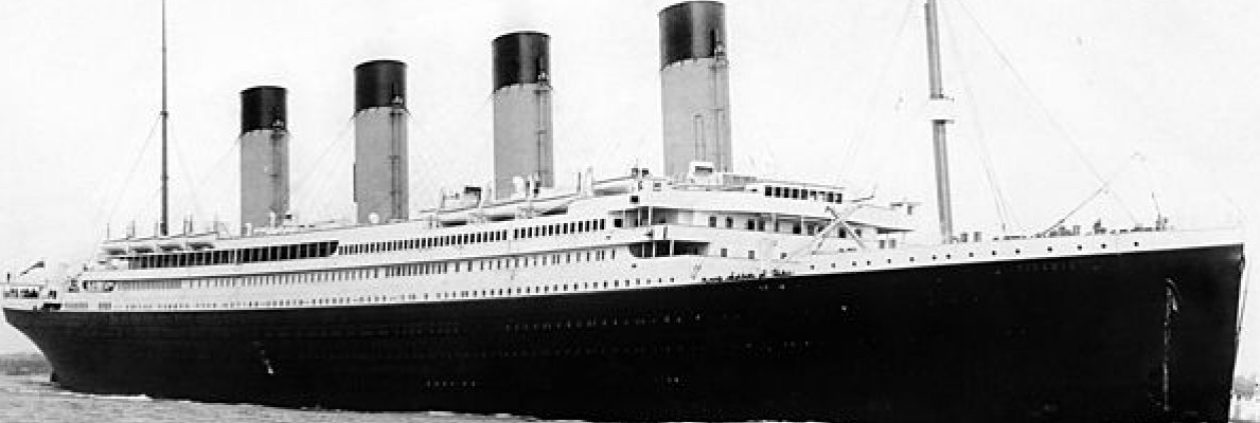
U.S. Library of Congress, digital id: cph 3b04287
Public Domain
Since the sinking of the Titanic, lingering questions as to who survived and who died were the subject of much speculation. Captain Arthur Rostron of the Carpathia had kept a media blackout refusing to answer any messages. J. Bruce Ismay was sequestered in a cabin and stayed there for the entire voyage back to New York. He sent a message to the New York office of the White Star Line informing of the sinking. Except for survivors sending their own messages out, no one really knew who had lived or died when Carpathia finally arrived on a rainy Thursday evening on 18 April 1912.
News reporters had gathered in boats with megaphones yelling to people aboard they would pay for their survivor accounts. One enterprising reporter did manage to get aboard and get some quick interviews. He tossed the notes inside a cigar box lined with champagne corks to a Hearst editor in a tugboat. It would be rushed back to the New York World for a special evening edition. Meanwhile in the pier sheds there were some 1,000 people-mainly friends and relatives-gathered there. J.P. Morgan Jr. was there along with members of the Widener and Thayer families who had been on the special trains that had been heading north to Halifax to greet the survivors there. There was some crying heard. As Carpathia slowly made her way down the battery, it was estimated close to 10,000 people were watching, mostly in silence, as she passed. Some numbers are higher at 40,000.

U.S. Library of Congress,Bain Collection, Control #ggb2004010347
Public Domain
Carpathia would make a slight detour to the White Star dock to drop off her lifeboats. It was a stunning moment when you realize that those lifeboats, along with the flotsam and jetsam, were all that remained of the once proud RMS Titanic. Although arriving in New York at 8:30 pm, the delay to unload the lifeboats along with the rain and darkness meant Carpathia did not dock at Pier 54 until after 9 pm. The gangway went down at 9:25 pm. There were a large detachment of doctors, nurses, nuns, and priests ready to board along with stretchers. According to one report, three women did not want to wait for the gangway to come down and climbed down ladders from the ship. The Salvation Army was also there to render assistance as well.
Many men removed their hats in respect when the gangway went down. Many survivors had little clothing, just what they had on when they left Titanic, and wore a hodge-podge of whatever they could get on Carpathia. Two women were apparently hysterical (one report said violent and deranged). Those who had relatives waiting were greeted by them. Relief for those who had no one was done by the Women’s Relief Committee, the Travelers Aid Society of New York, the Council of Jewish women and many more. Transportation was provided to shelters provided by these groups. Those who had relatives in New York quickly left while those who had relatives within the U.S. stayed for a few days to arrange transportation. The Pennsylvania Railroad provided a special free train to take survivors to Philadelphia. The surviving crew members would be taken to the Red Star Line steamer SS Lapland and housed there temporarily in passenger cabins.
Meanwhile other interesting parties boarded the Carpathia that night. They were U.S. Senators William Alden Smith, Francis G. Newlands, and others armed with subpoenas to serve on J. Bruce Ismay, as well as the surviving officers and crew of Titanic. An inquiry was about to begin, and they wanted to make sure they would be all be there for it the following day at the Waldorf Astoria in New York.
Sources:
Books
Behe, George TITANIC: SAFETY, SPEED AND SACRIFICE, Transportation Trails, Polo, IL 1997
Eaton John P. & Haas Charles, TITANIC TRIUMPH AND TRAGEDY, SECOND EDITION, W.W. Norton & Company, New York, New York, 1995 First American Edition
Lord, Walter, A NIGHT TO REMEMBER, Holt Rinehart and Winston, New York, New York, 1955. Multiple revisions and reprints, notably Illustrated editions (1976,1977,1978 etc)
Lord, Walter, THE NIGHT LIVES ON, Willian Morrow and Company, New York, New York, 1986 (First Edition)
Lynch, Don & Marshall Ken, TITANIC AN ILLUSTRATED HISTORY, Madison Press Books, Toronto, Ontario Canada, 1992
Internet
Encyclopedia Britannica, www.britannica.com/search?query=Titanic.
“Encyclopedia Titanica.” www.encyclopedia-titanica.org.
“The Titanic: Sinking and Facts | HISTORY.” HISTORY, 12 Mar. 2024, www.history.com/topics/early-20th-century-us/titanic
















 3. Possible Titanic Lifeboat? Turley McShane recently acquired an old lifeboat that had been resting in a hedgerow for years and thinks it might be from Titanic. “When he travelled across the Irish Sea to have a look at it, he found the boat had been languishing in a hedgerow. It had been bought in Liverpool where effects off all the White Star Line ships were disposed of” reports Belfast Telegraph. [Editors note-If I recall correctly, the lifeboats were all repainted with new names so and no one knows the final disposition of them. It will be easier to prove it was a White Star lifeboat but harder to prove it was aboard Titanic.]
3. Possible Titanic Lifeboat? Turley McShane recently acquired an old lifeboat that had been resting in a hedgerow for years and thinks it might be from Titanic. “When he travelled across the Irish Sea to have a look at it, he found the boat had been languishing in a hedgerow. It had been bought in Liverpool where effects off all the White Star Line ships were disposed of” reports Belfast Telegraph. [Editors note-If I recall correctly, the lifeboats were all repainted with new names so and no one knows the final disposition of them. It will be easier to prove it was a White Star lifeboat but harder to prove it was aboard Titanic.]